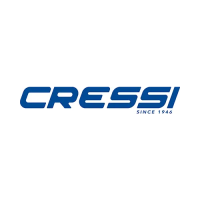28
English
PO2 ALARM.
The computer can also constantly monitor another basic parameter concerning
oxygen:O2partialpressurevalue(PO2).Oxygentoxicitymaybecausedbothby
excessiveexposureandbyexceedingthemaximumPO2,whichinpracticemeans
exceedingthemaximumdepthallowedbythemixtureused.Asdescribedabove,
thediversetsthePO2limitvaluebetween1.2barand1.6bar.DONATELLO/
MICHELANGELO/RAFFAELLOconsiders1.6bartobethemaximumallowable
limitforpartialpressure,anddependingonthemixtureused,itwillautomatically
reportthemaximumdepththatcanbereached.Rememberthatevenusingair,
youcanreachtheoxygentoxicitylimit.ThislimitvariesdependingonthePO2set.
DONATELLO/MICHELANGELO/RAFFAELLOismanufacturedwithapresetvalue
of 1.4 bar, which corresponds to maximum depth of 186 ft./56.6 m in air.
Naturally,thecomputercanalsobesettootherPO2values,uptoamaximumof
1.6bar,onlywhenintheDIVE-SPPO2SETscreen,onthesurface.
ThecomputerwillissueanalarmtoalertthediverofexcessPO2 .When
thelimitdepthforthePO2set(from1.2-1.6bar)isreached,audibleandvisual
alarmswillbetriggered.ThevisualalarmashesthePO2iconandthecurrent
depth.Oncethediverreturnstoadepthshallowerthanthelimit,theaudiblealarm
willstop,andthecurrentdepthandthe iconwillstopashing.However,the
iconwillstayonfortherestofthediveandinthelogbook.
CNS TOXICITY DISPLAY
The Cressi DONATELLO/MICHELANGELO/RAFFAELLO can display a graph of
thelevel of oxygen toxicity to the Central NervousSystem(CNS).The toxicity
levelistiedtotheOxygenPartialPressureandtothetimethediverisexposedto
highOxygenPartialPressure(PO2).ThelevelofOxygenToxicityisrepresented
inthedisplaybyacolumnwith5segmentsthatindicategrowingquantitiesof
accumulatedoxygen.Whenallthesegmentsarelit,100%ofthemaximumlimit
theCNScantoleratehasbeenreachedandthereisaseriousdangerofhyperoxia.
It is clear therefore that it is imperative for divers to be able to constantly monitor
thisvalue,whichasafunctionoftheOxygenPartialPressureandexposuretime,
mustbemonitoredthroughouttheentiredive.Whentheoxygenlevelreaches
dangerous levels, near the maximum allowable tolerance (corresponding to 4
segmentsoutof5), the bar graph will start ashing and sets off a temporary
audiblealarmsignalingaproximitytoatoxicsituationfortheCNS.Ifthesituation
remainsunchangedorworsens (100% of allowable toxicity), the bar and text
willcontinuetoashandthetemporaryaudiblealarmisrepeateduntilthediver
ascendsandtheoxygenpartialpressurefallsbelow0.6atmospheres.Atthispoint
thegraphwillstopashing,butthealarmwillstillberecordedinthelogbook.
TOXICITY
BAR

